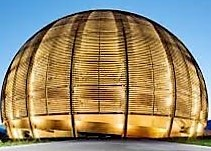Speaker
Description
The neutron activation technique is a well established method to measure neutron capture cross sections relevant for the s-process.The $^{7}$Li(p,n) reaction at E$_{p} = 1912\,$keV is often used as a neutron source since the energy distribution of the emitted neutrons closely resembles a Maxwell-Boltzmann spectrum of $k_{B}T = 25\,$keV mimicking the $^{22}$Ne($\alpha$,n) phase in TP-AGB stars. The weak s-process, which takes place in massive stars, can reach energies up to $k_{B}T = 90\,$keV. Neutron spectra corresponding to a Maxwell-Boltzmann distribution with $k_{B}T > 25\,$keV cannot be produced by the $^{7}$Li(p,n) reaction directly.
We developed a method to obtain quasi-Maxwellian neutron capture cross sections over a wide energy range by combining a set of spectrum average cross sections measured at six different proton energies and distances between the lithium target and the sample. The measured spectrum averaged cross section can be used to calculate the Maxwellian averaged cross-section from $k_{B}T = 25\,$keV to $k_{B}T = 90\,$keV. Over the last two years neutron capture cross sections on over 20 isotopes were measured at Goethe University Frankfurt using this method.
An overview of the current experimental method, challenges during data analysis and the first results are presented.
